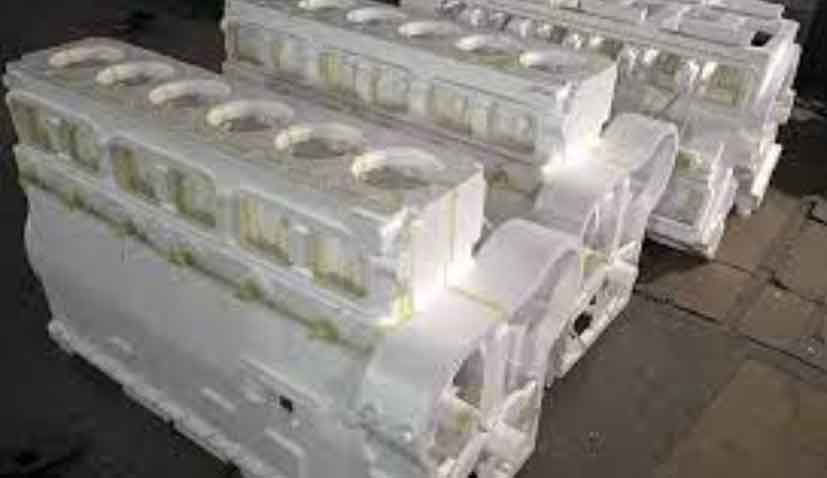In modern industrial applications such as construction, automotive manufacturing, and petrochemical engineering, circular components demand exceptional mechanical integrity and dimensional precision. This study investigates the lost foam casting process for medium-sized thin-walled rings (outer diameter: 435 mm, wall thickness: 10–19 mm), addressing challenges like misruns, cold shuts, and shrinkage porosity through systematic process design and numerical simulation.

1. Process Design and Numerical Modeling
The step gating system with combined cluster casting (5 components per mold) was developed to enhance feeding efficiency. Key process parameters for lost foam casting include:
| Parameter | Value |
|---|---|
| Material | QT500-7 |
| Pouring Temperature | 1,430 ± 10°C |
| Coating Thickness | 2 mm |
| Sand Type | Ceramic Beads (70/140 mesh) |
| Cluster Configuration | 5 components with 2 gates each |
The thermal behavior during solidification is governed by Fourier’s Law:
$$ \frac{\partial T}{\partial t} = \alpha \left( \frac{\partial^2 T}{\partial x^2} + \frac{\partial^2 T}{\partial y^2} + \frac{\partial^2 T}{\partial z^2} \right) $$
where $α$ represents thermal diffusivity, calculated as:
$$ \alpha = \frac{k}{\rho C_p} $$
For QT500-7 alloy, $k$ = 35 W/m·K, $\rho$ = 7,100 kg/m³, and $C_p$ = 620 J/kg·K.
2. Solidification Dynamics and Defect Prevention
ProCAST simulations revealed critical solidification characteristics:
| Time (s) | Solid Fraction | Critical Observations |
|---|---|---|
| 5.66 | 0.12 | Initial metal penetration through bottom gates |
| 26.73 | 0.38 | Upper gate activation for thermal compensation |
| 112.60 | 0.92 | Complete riser solidification |
The shrinkage susceptibility $S$ is minimized through graphite expansion compensation:
$$ S = 1 – \frac{V_{\text{final}}}{V_{\text{liquid}}} + \beta_g $$
where $\beta_g$ = 2.4% volumetric expansion from graphite precipitation.
3. Cluster Casting Configuration
The 5-component cluster design achieved 83% yield improvement compared to single casting. Key benefits of lost foam casting in this configuration include:
- Reduced turbulence: The foam decomposition creates controlled gas flow paths
- Uniform cooling: Symmetrical cluster arrangement minimizes thermal gradients
- Economical sand usage: 22% reduction through optimized cluster geometry
4. Industrial Validation
Production trials confirmed simulation predictions with:
- Zero cold shuts/misruns in 200 castings
- Surface roughness Ra ≤ 12.5 μm without machining
- Dimensional tolerance ±0.25 mm across 435 mm diameter
Mechanical testing revealed:
$$ \sigma_b = 572 \pm 15\ \text{MPa},\ \delta = 7.2\%,\ \text{HB} = 195 $$
exceeding QT500-7 specifications (GB 1348-2009).
5. Process Optimization Guidelines
For successful lost foam casting of thin-walled circular components:
- Maintain pouring temperature gradient: $10^\circ$C/cm along circumference
- Control foam decomposition rate: $v_d = 0.8–1.2$ mm/s
- Optimize vacuum pressure: 0.04–0.06 MPa during pouring
This research establishes a scientific framework for implementing lost foam casting in high-precision circular component manufacturing, demonstrating significant improvements in production efficiency and quality consistency.
